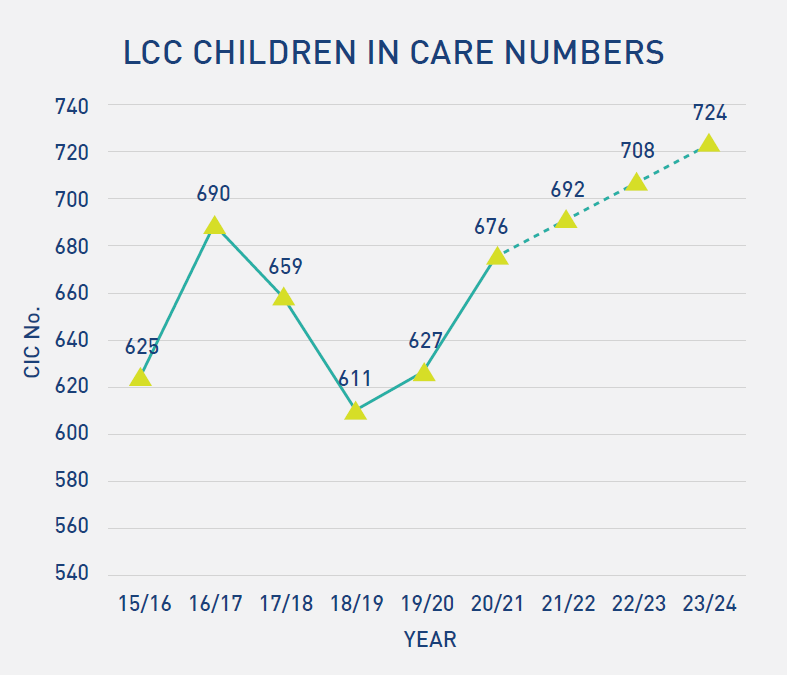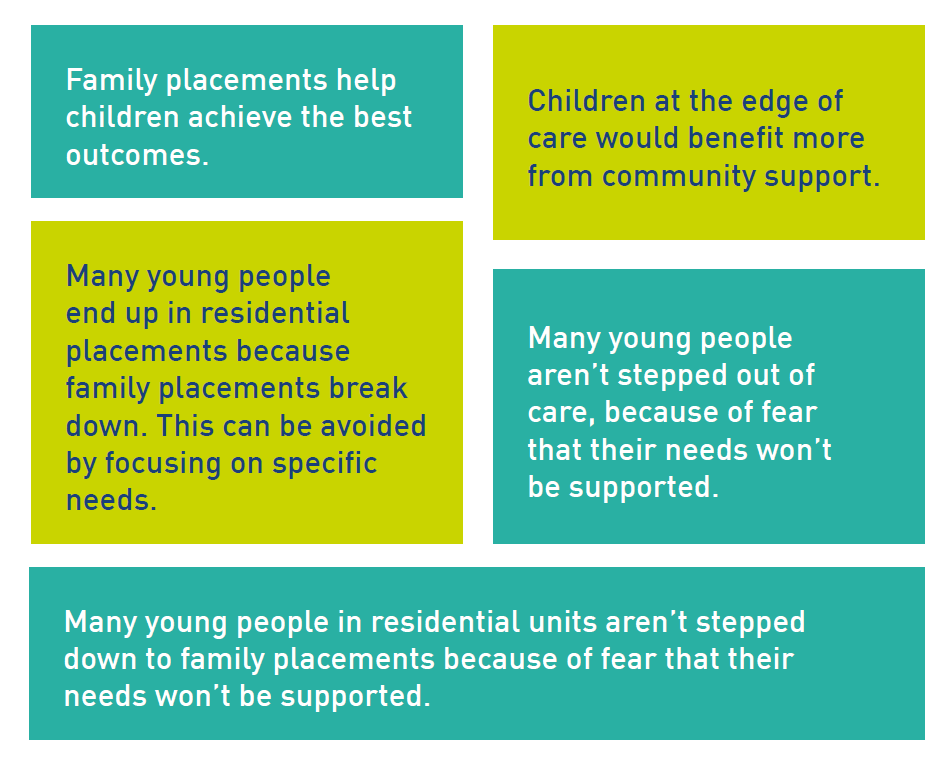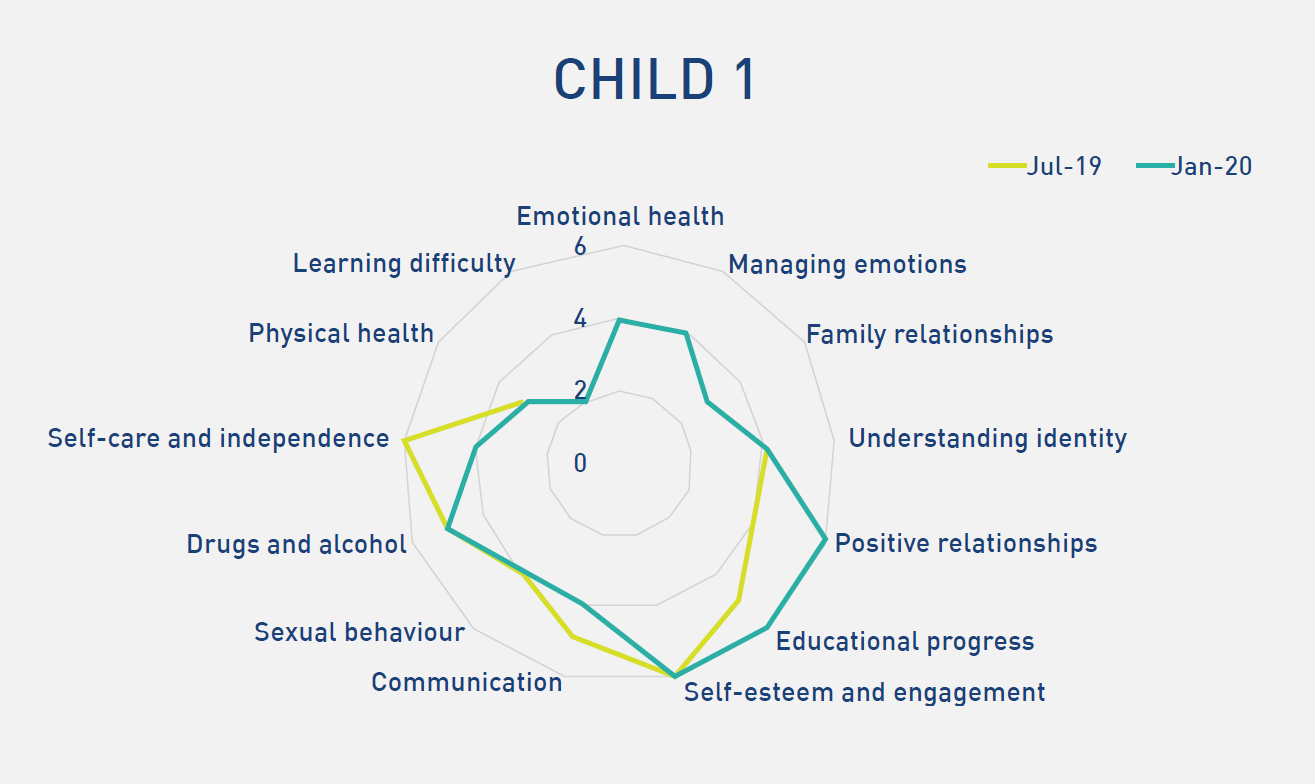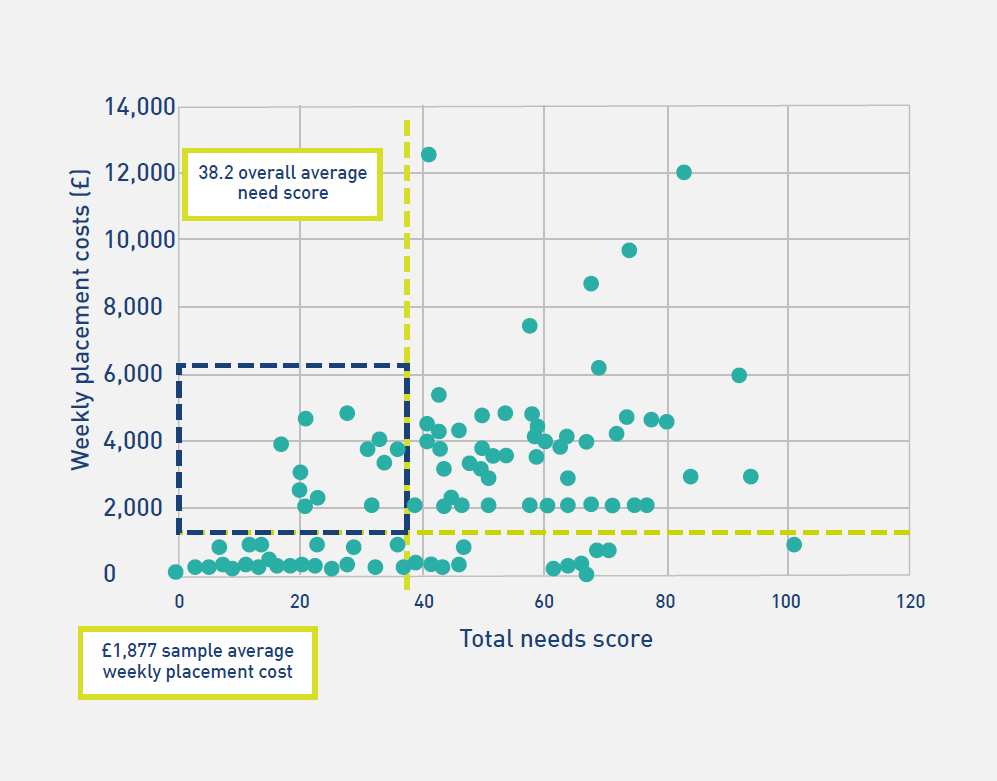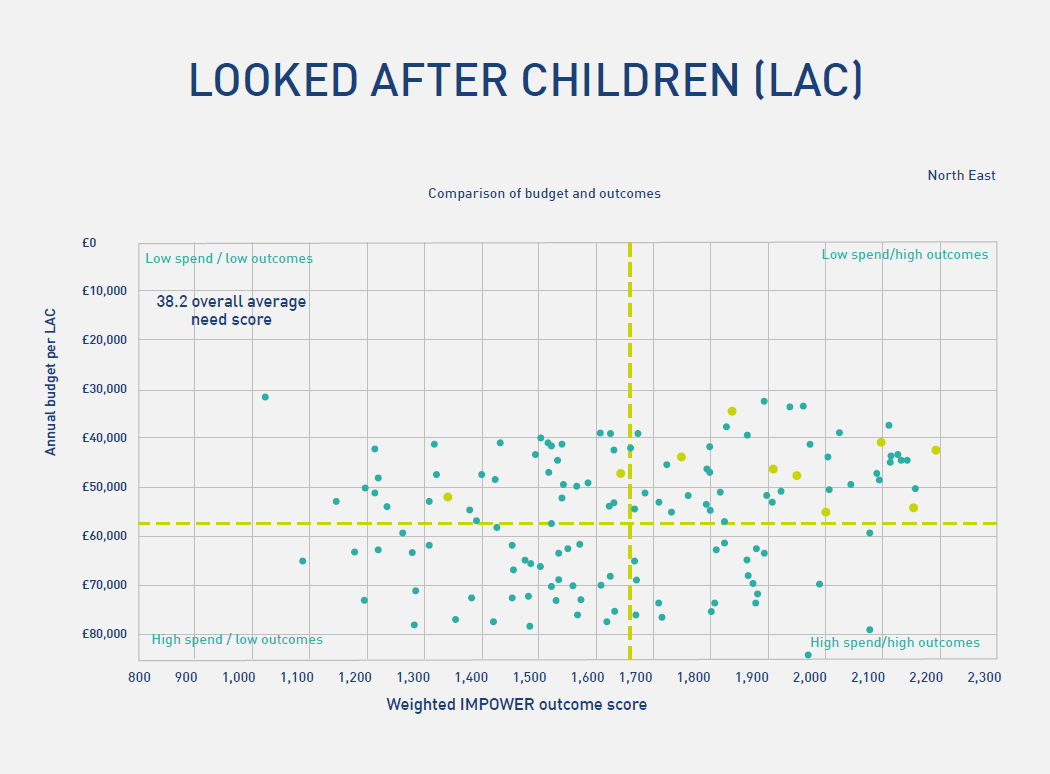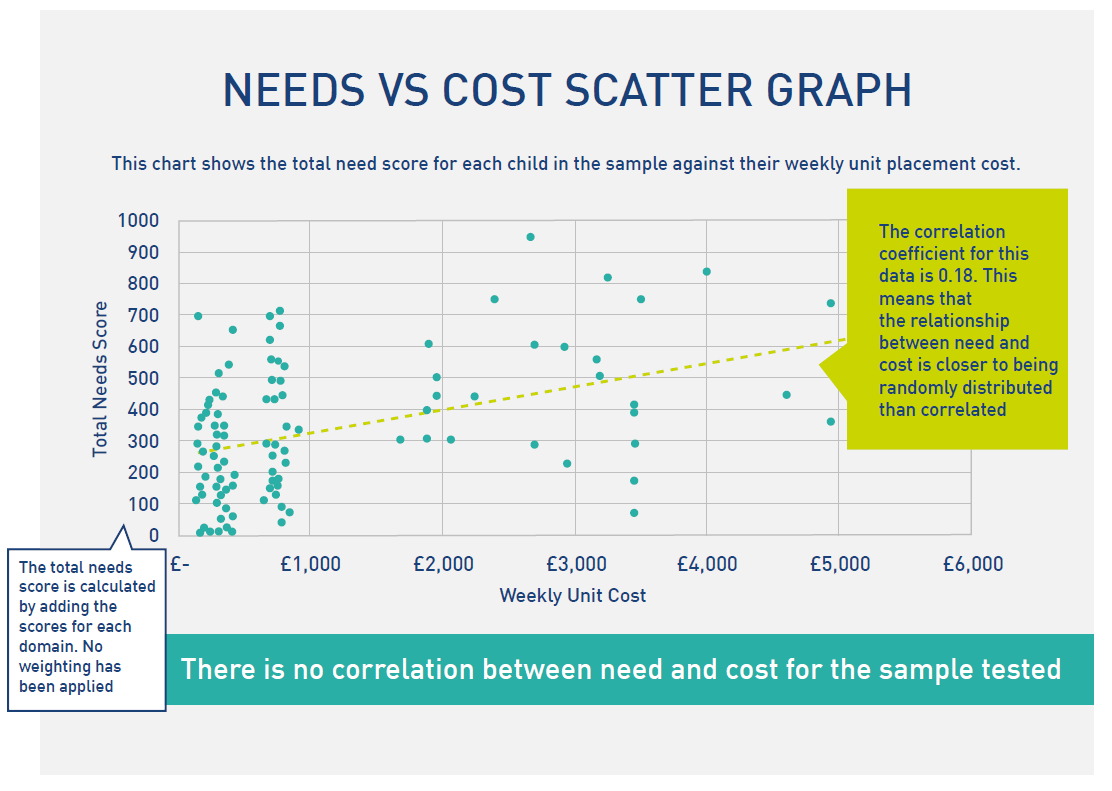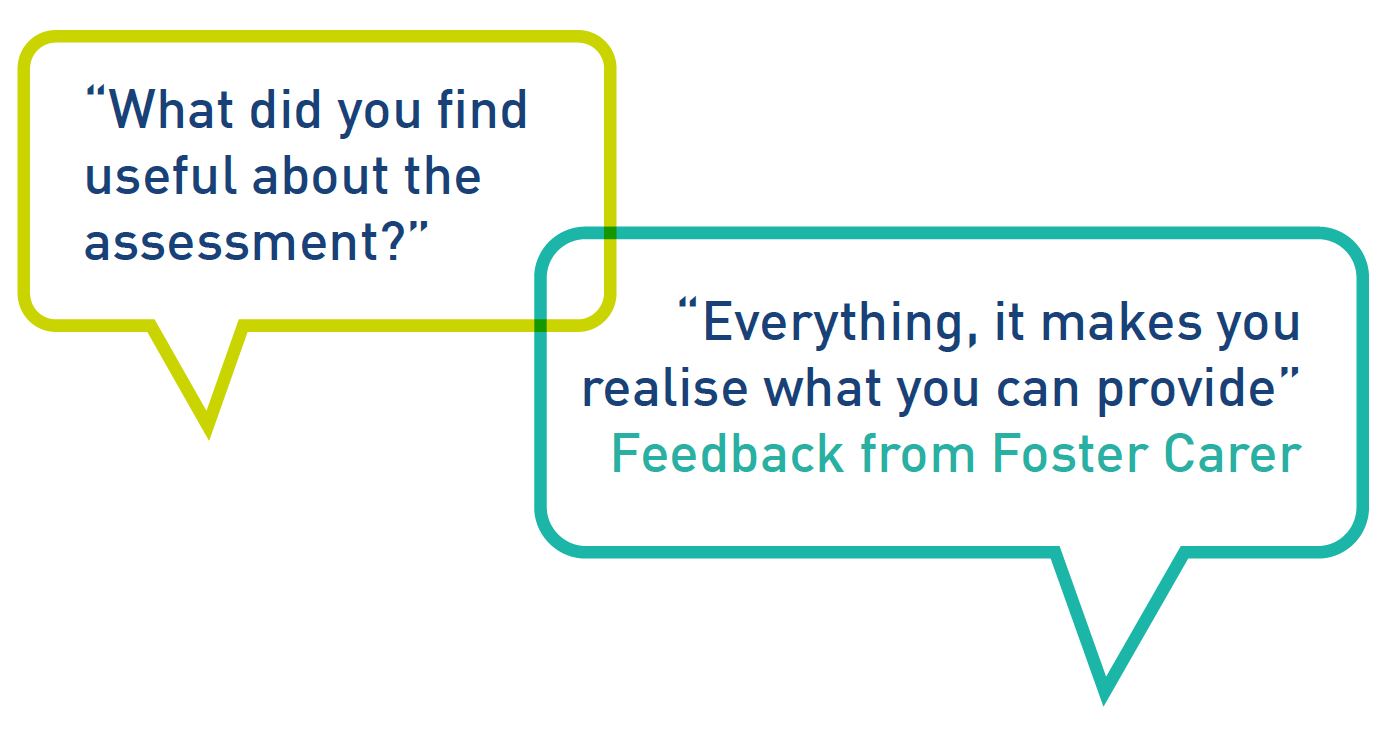“Working with IMPOWER has helped us to significantly strengthen and improve the way we support our children in care – and this is having a real impact on children’s lives and on our efforts to maintain a stable financial footing. My team have been really impressed with how IMPOWER have engaged and worked with frontline staff, using Valuing Care to make step changes to behaviour, practice and decision making at pace.”
Valuing Care
Delivering better outcomes and life chances for children and young people
Debbie Barnes, Chief Executive, Lincolnshire County Council
Introduction
The message is clear
Over the last four years we’ve engaged with over a thousand practitioners, commissioners, providers, children and families. Bringing a child into care is the most important intervention the state can ever make in a child’s life. Yet despite this, the experience of most children and young people in care is not a life-enhancing one. The outcomes narrative is well documented, and as a country we simply need to do more.
IMPOWER’s Valuing Care approach was originally devised to do just that – help councils to improve the life chances of children in care by strengthening the links between children’s needs, the outcomes being pursued, and the resources available. Councils and partners we’ve worked with have since extended the approach across the child’s journey, as a key part of preventative offers designed to strengthen family resilience. This showcases the innovation and ambition of the sector.
The triangulation of need with cost and outcomes is a relationship that defines and delivers real value – ensuring that spending goes to where it matters most to achieve better outcomes for children and young people, and delivering sustainable cost reductions in the longer term.
From containment to ambition
There are so many people, agencies, forms, and systems involved in the journey to a child’s placement, and a lack of consistent language and understanding between them. Because of this, young people are often reduced to a label or a level of risk, rather than being understood as individuals with needs.
When it comes to care, ‘success’ is simply finding a placement and containing risk, at any cost. This approach isn’t cost effective, and more importantly, there’s little chance of long-term happiness. Children and young people can only thrive if they’re supported as individuals, with a support package that’s tailored to their personal needs.
Time to talk
The debate surrounding the optimum model of care is not a new one. Regardless of the latest inspection-framing or well-intended improvement initiatives, there is no ‘one size fits all’ approach for delivering effective and sustainable children’s social care.
Collaboration is key to understanding individual requirements. And without a consistent two-way conversation with each child, there’s no fair or compassionate way to monitor progress. How can children’s services showcase what’s being achieved and demonstrate effective spending?
Money where it matters most
Our research shows that the link between children’s needs and council spending is weak, and money isn’t being invested where it’s needed. Increased spend is a way of coping with increased demand, but it is proving unsustainable and the cost of care for councils is often disproportionate to the number of children being looked after. These spend and demand challenges existed pre- Covid-19, but have been exacerbated as a result of it.
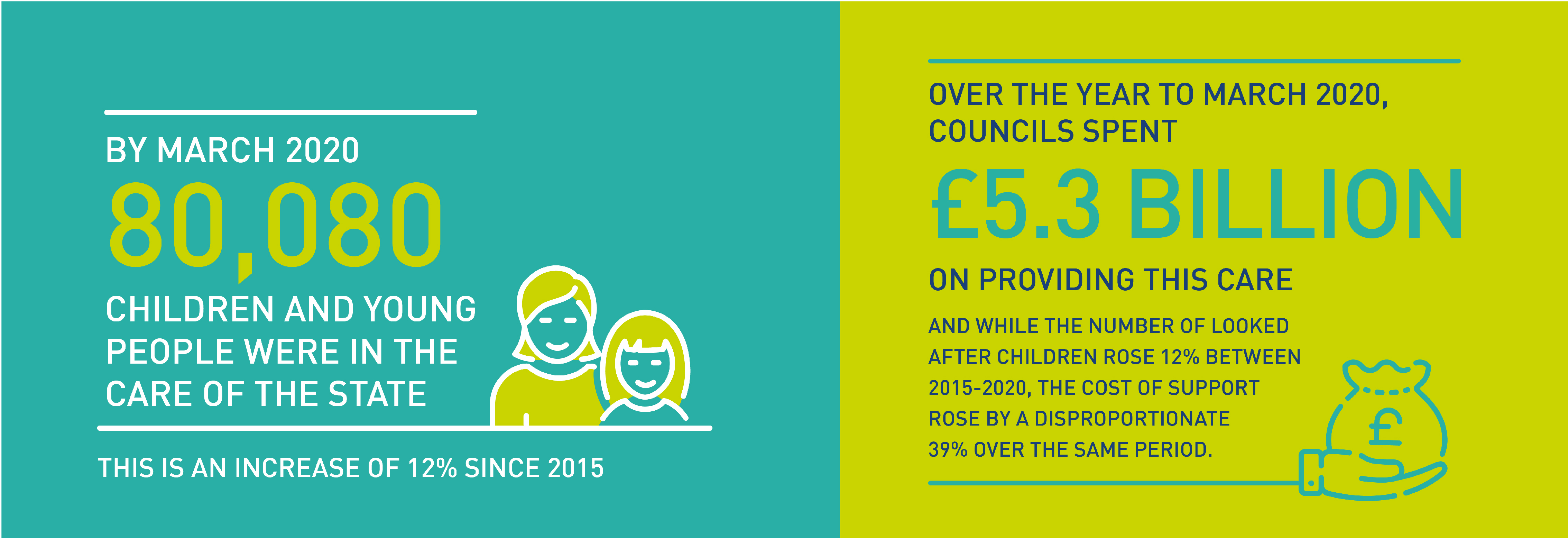
Data source: LGA forecast of spend growth on children’s services, submission to Spending Review 2021 (validated financial outrun figures are not available for 20/21).
In summary
There’s no correlation between the needs of children and young people, the outcomes they achieve, or the investments made. And while more money and resources are being directed towards the problem, it is unsustainable, and doesn’t solve the challenges faced by the wider system or address the pressures of rising demand within it.
It’s an unfair and unsustainable approach for all involved, and vital opportunities to improve lives are being missed. Something needs to change.
The IMPOWER approach: Valuing Care
Most problems lie within the system. And it’s these unintentional flaws that need to be fixed. We developed the Valuing Care approach four years ago, working in partnership with a number of forward-thinking councils who wanted to set a new, inclusive ambition for the children’s care system. It’s an innovative way of working that strengthens the links between the needs, costs and outcomes for children in care, but is now showing benefits across the full child’s journey.
Valuing Care provides new tools, insights and metrics that provide leaders with the evidence and confidence to define and drive value and fairness in the care system. These are co-designed to shift system culture towards demonstrable improvements in outcomes and return on investment.
IT DOES THIS BY:
- Introducing a consistent focus on needs across the care system;
- Capturing and rating the needs of children throughout their journey;
- Matching children with the interventions or placement support appropriate for their needs;
- Evidencing how children’s needs and outcomes change as a result;
- Using this information to help carers, providers and professionals to better target interventions and provision to improve outcomes for children;
- Aggregating the needs and cost intelligence to underpin needs-based commissioning at cohort and population level, and fully involving children and young people.
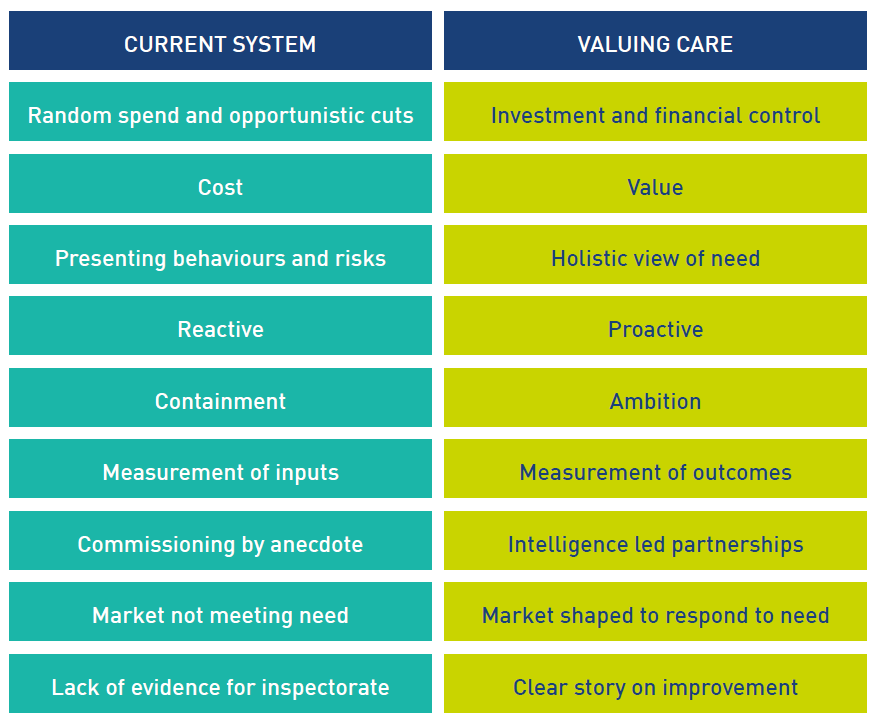
We don’t just talk the talk
With a passion for securing better outcomes for children and young people, combined with over 20 years’ experience of delivering change in complex systems, we get stuck in. We help councils develop and implement strategies to achieve better results – giving Directors of Children’s Services and senior colleagues the tools, insights, and metrics they need to bring value to their services.
Since February 2018, a number of councils have used the Valuing Care approach to improve outcomes for children both in and on the edge of care. This report shares the success of just three of them.
We understand real value
The socio-economic factors that drive demand in children’s services are as broad as they are unpredictable. This is a challenge – and one that doesn’t seem to interest HM Treasury in the plea for more resources. It’s clearly more important than ever for local authorities to offer a consistent narrative regarding value and demonstrate impacts in the form of cost and outcomes from every pound spent.
This is the rationale behind Valuing Care, and behind our extension of the approach into special educational needs and disabilities (SEND). By better capturing and reviewing the needs of children and young people, and by assessing value and tracking outcomes, we’re enabling councils to make much better decisions on support and commissioning.
Our work with numerous children’s social care departments has proved that when services and interventions are focused on genuine and evidenced needs within families and communities, demand can be managed more effectively. By adopting approaches that can match those needs to the outcomes that each child can achieve, and the resources invested in them, we can define and understand value across the system.
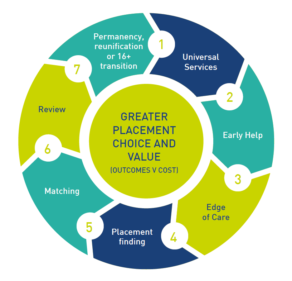
While a funding shortfall is a big part of the problem, local government and the Department for Education now have to strengthen the argument for more funding from HM Treasury by demonstrating a much deeper understanding of how money is currently spent, and by proving what difference it makes.
By developing a more systematic understanding of demand and value, we can ensure the future sustainability of children’s services – one which puts the needs of children and families back at its heart.
Now is the time
There’s never been a more challenging time to work in children’s services. But with the hard work of passionate individuals, we’re seeing positive change across the sector; better outcomes for children and young people and greater value from scarce resources. Valuing Care isn’t a quick fix. It’s an insight-led, long-term strategy with successful, sustainable results.
EDGEWORK: A unique methodology
EDGEWORK® is IMPOWER’s unique approach to understanding and delivering change in complex systems. It’s the framework for Valuing Care.
How does EDGEWORK® work?
The issues faced by children’s services are complex. You need two fundamental things to manage this complexity and create lasting, positive change:
- A mindset shift that breaks through organisational boundaries.
- The tools and expertise (including applied behavioural science) to understand the individual needs of children.
Our EDGEWORK® approach gives you both.
The case studies that follow in this report are framed around the four key elements of EDGEWORK:
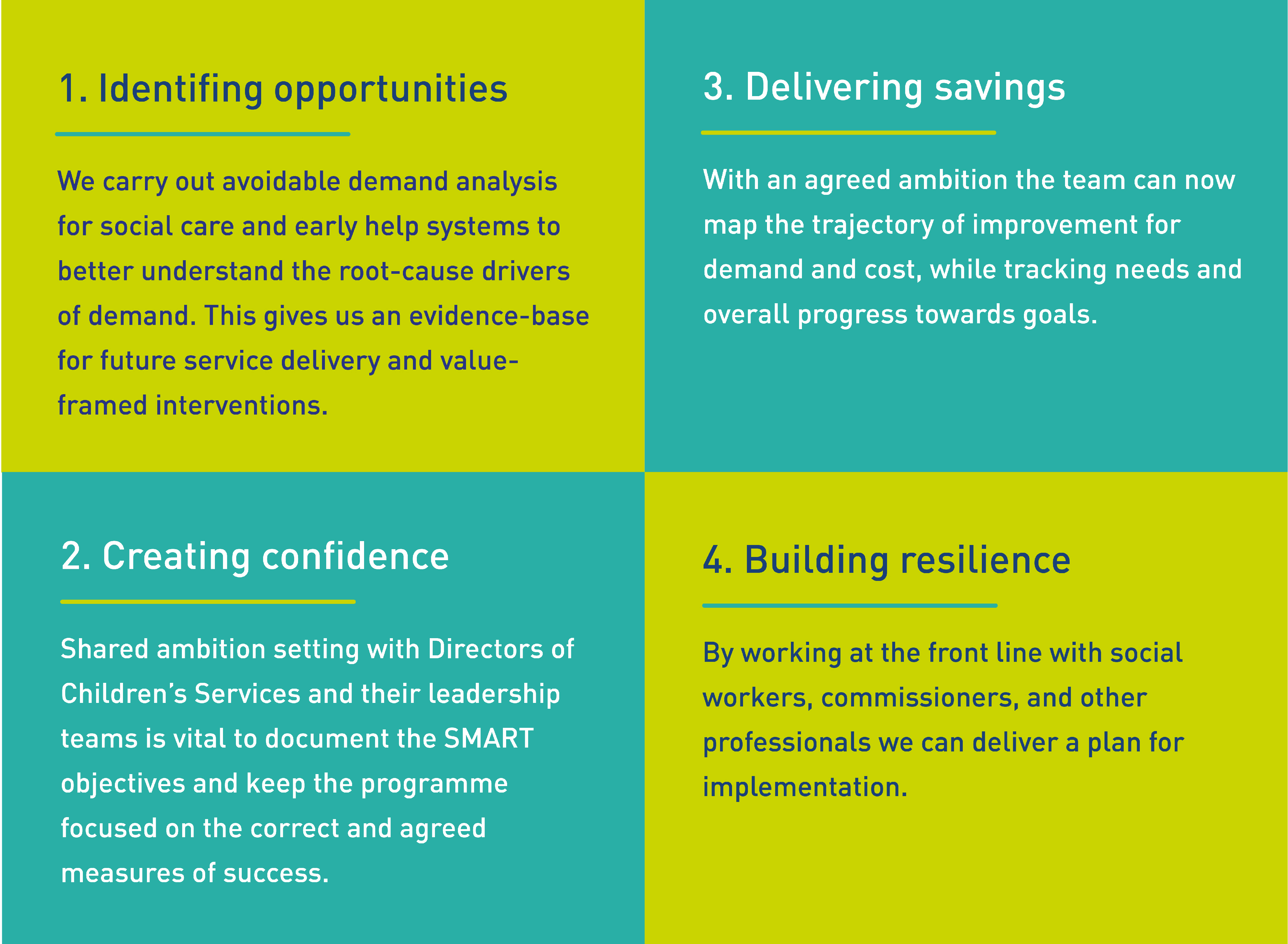
Delivering at the front line
The following three case studies highlight exactly what’s possible with Valuing Care. From embedding it as the core approach to placement decision making; through to the design and delivery of innovative outcomes-focused initiatives across the full social care journey.
Each of the councils we worked with are in different situations and their journeys with Valuing Care also differ. This provides fascinating and varied emphasis and insight. From social work practice improvement and improved relationships with young people and providers; through to strategic commissioning, and evidencing outcomes and value. But a common theme for all councils is a shift to a fairer system in which better outcomes cost less.
We don’t want to stop here. We want to make this way of working the standard across the whole social care journey, for every individual. We’re excited about the potential of this approach; the open and honest way in which we’ve shared learning with other councils has been enlightening. It feels like we’re in this together and unlocking new ways of working across many different areas.
“The tool allowed for clear in-depth analysis of the child’s needs which confirmed what the care plan should be.”
Oxfordshire County Council
“IMPOWER were a tremendous ally and partner to work with and there’s been a sense of trust and mutual respect from the start. They have got really well-evidenced tools and solid experience not only working with councils but also some of their consultants have worked in local authorities. They really understand our work because they have been involved in it themselves at some point in their careers.They were absolutely involved in everything. They add capacity from an organisational perspective but ensure that there’s ownership within the organisation so that it’s sustainable when they walk away. Ultimately, it’s only going to work if it’s led from within.”
Lara Patel, Deputy Director of Children’s Services, Oxfordshire County Council
Conclusion
IMPOWER’s Valuing Care approach is tried and tested. It’s been developed in partnership with councils across the country and is delivering demonstrable improvements to the lives of children and young people.
The challenges that councils face in delivering children’s services are unprecedented. In 2019/20, over half of England’s £10.5bn total spend on children’s services was spent on c.80,000 children in care – with the rest spent on the 99% who access other services. Future forecasts by the County Councils Network (CCN) and the funding shortfall articulated by the Local Government Association (LGA) make for grim reading. These challenges will only continue to grow if we don’t take immediate action.
As highlighted in the recent report from the Competition and Markets Authority (CMA), it’s also clear that the system for placements commissioning is failing children in care. With no obvious relationship between a child’s needs, spend, and outcomes, the sector isn’t able to demonstrate progress or value, or understand the kind of provision it needs more of. Practitioners know from experience that stable and well-matched care often makes all the difference, but poor systems are failing to deliver this at scale. At a time when resources are so precious, the sector must tighten its control of the money spent on children in care to ensure that every pound is making a positive difference. Too often we see weakness in the placement commissioning process – to the point where huge investment decisions are made regarding a young person’s future, without proper consideration of what the individual needs, or how the delivery of outcomes will be managed. Whilst we welcome the broad nature of the recommendations made by the CMA, the solution needs to consider more than how placements are purchased, and how the market/providers are managed.
It’s much more involved than this, and it needs to start a lot earlier in the process – the Valuing Care approach is the perfect framing for this.
Understanding need is at the heart of our approach. We’re working with a number of councils to strengthen their understanding of their care and wider cohorts of children and young people, developing their responses to the demand and sufficiency challenges, and supporting them in engaging partners and the wider market. We’ve found that there’s very little correlation between the level of expenditure and need, and very little evidence of the delivery of outcomes. But we’ve also uncovered an opportunity to do something about it. Amongst providers, commissioners, social workers, and young people themselves, there’s a real enthusiasm to shift from containing risk and cost, to providing value and investing in better futures.
We have an evidence-based methodology which improves the system for commissioning placements or interventions for children in or on the edge of care. Our methodology enables councils to build and develop a link between children’s needs, spend and outcomes. More importantly, it ensures that we can demonstrate progress and value, for individuals, cohorts and the system as a whole. Practitioners know from experience that stable and well-matched care often makes all the difference, and as highlighted in the case studies, we can help councils develop the systems to deliver this at scale. This will mean that huge investment decisions regarding a young person’s future will be made with full consideration of their holistic needs, and with a proper plan to ensure delivery of outcomes.
Better outcomes cost less, and we’re proud to help the sector prove it
Get in touch
If you are dealing with any of the challenges described in this publication, contact us to discuss how we could support you.
AUTHOR: OLLY SWANN
oswann@impower.co.uk
+44 (0) 20 7017 8030
Related content
Read more related content from across the site, including in-depth reports, project case studies and articles.
